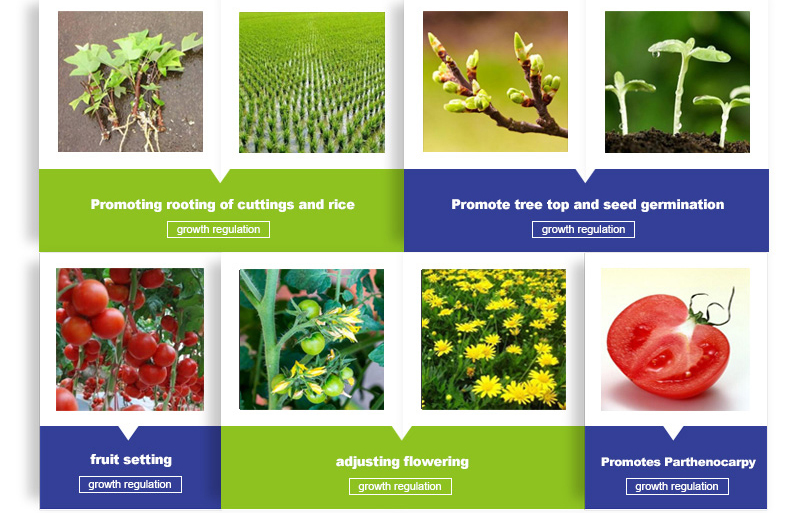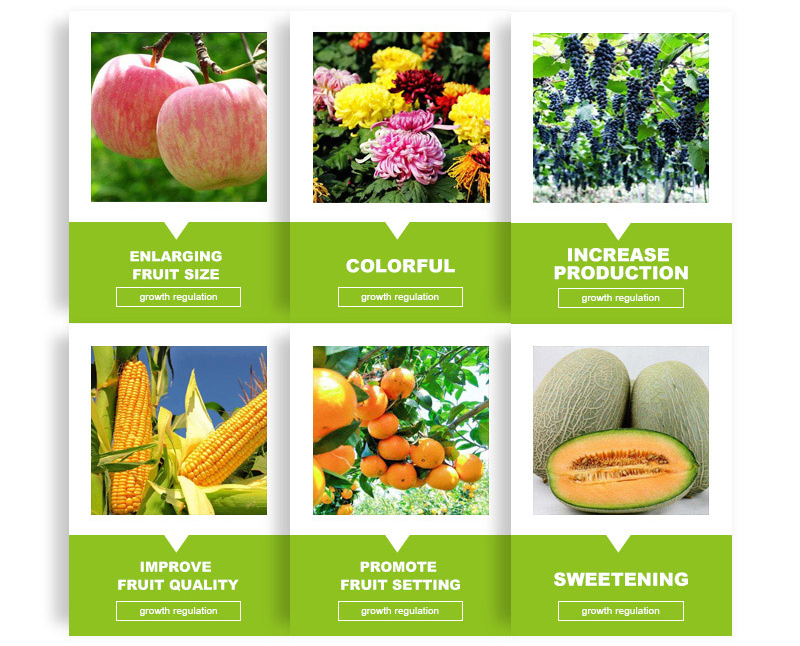Plant growth regulators can affect multiple stages of plant growth and development.
In actual production, plant growth regulators play specific roles.
Including induction of callus, rapid propagation and detoxification, promotion of seed germination, regulation of seed dormancy, promotion of rooting, Regulate growth, regulate plant type, regulate flower bud differentiation, regulate floral nature, induce seedless fruit, preserve flowers and fruit, thin flowers and fruit, regulate fruit maturity, prevent fruit cracking, strengthen seedlings and seedlings, prevent lodging, improve stress resistance, and improve Crop quality, increase yield, storage and preservation, etc.
The application effect of plant growth regulators is related to the specific application technology. For example, the use of auxin regulators at low concentrations can promote crop growth, while high concentrations can inhibit plant growth.
Plant growth regulators have a wide range of applications, which can be divided into the following 6 areas:
1. It is applied to field crops, such as rice, wheat, corn, rape, peanut, soybean, sweet potato, cotton and potato.
2. Applied to vegetables, such as melons, beans, cabbage, cabbage, fungi, solanaceous fruits, onions and garlic, root vegetables, green leafy vegetables, etc.
3. Applied to fruit trees, such as apples, cherries, grapes, bananas, citrus, ginkgo, peach, pear, etc.
4. Used in forestry, such as fir, pine, eucalyptus, camellia, poplar, rubber tree, etc.
5. Applied to special plants, such as aromatic plants, medicinal plants, sweet sorghum, sugar beet, sugar cane, tobacco, tea trees, etc.
6. Applied to ornamental plants, such as herbal flowers, succulents, woody plants, etc.
Post time: Mar-31-2021






